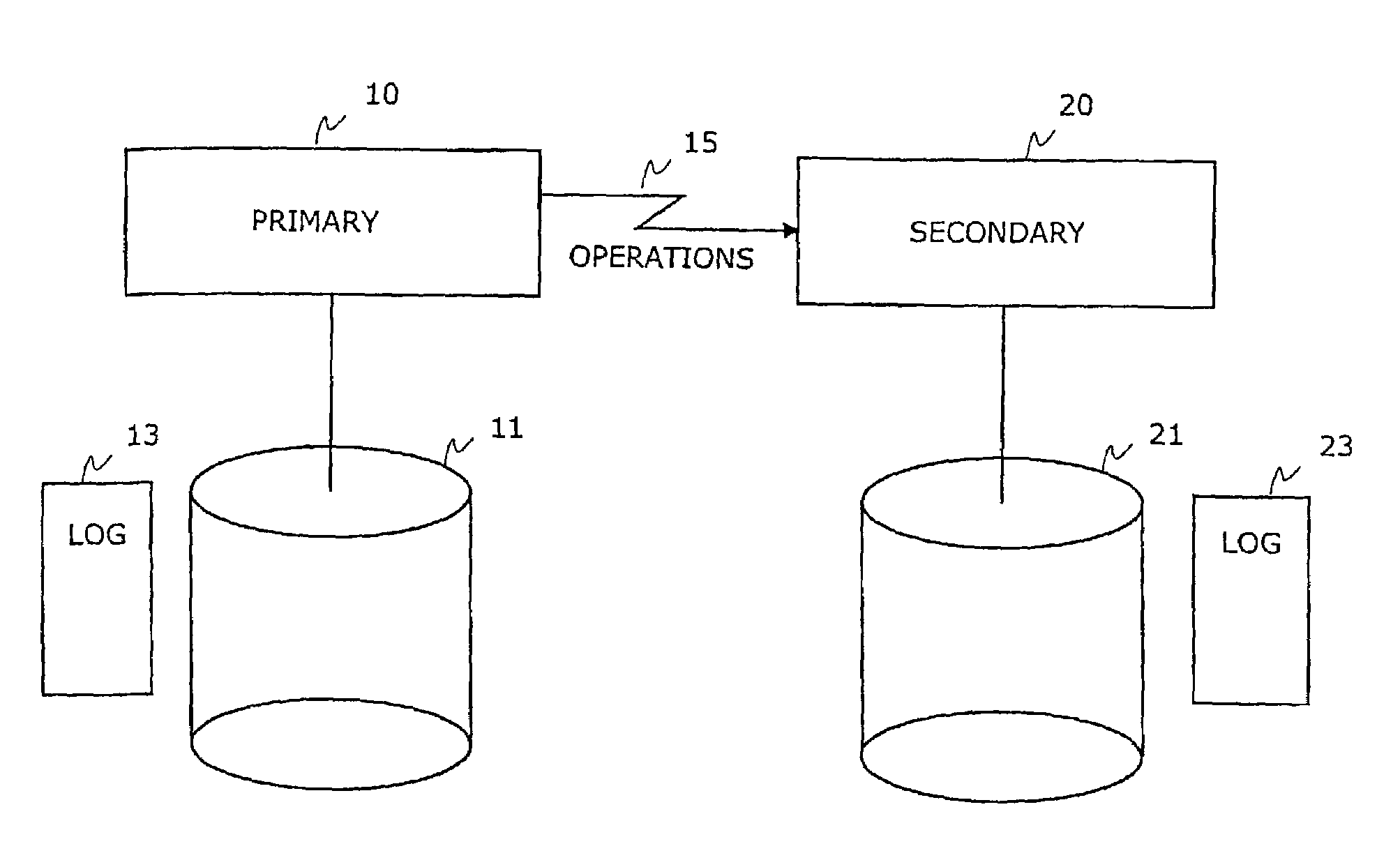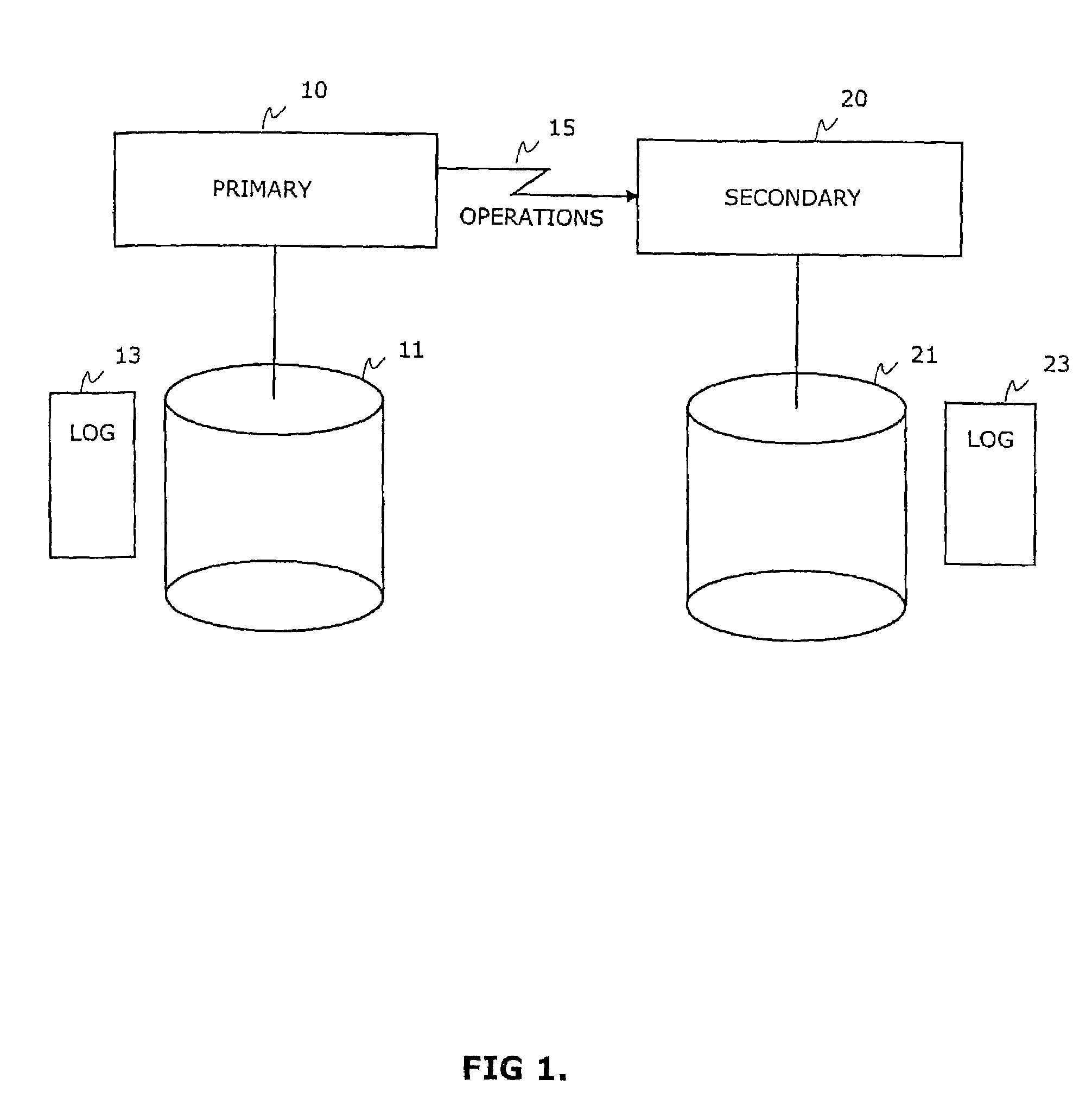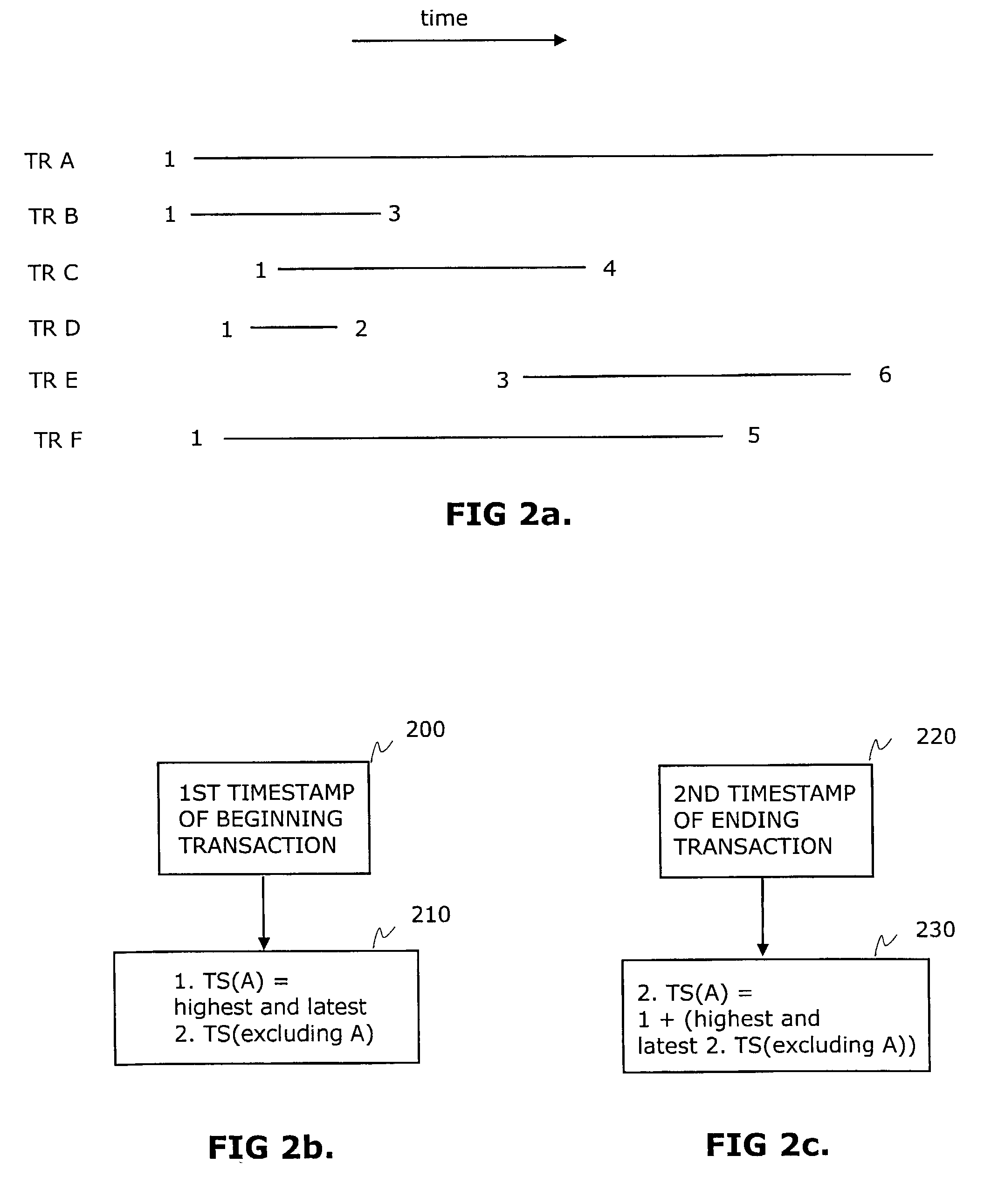Method and system for processing replicated transactions parallel in secondary server
- Summary
- Abstract
- Description
- Claims
- Application Information
AI Technical Summary
Benefits of technology
Problems solved by technology
Method used
Image
Examples
second embodiment
[0058]FIG. 5c illustrates a flow diagram of the invention when writing one transaction to the recovery log file 55. In step 500 transaction TR1(P) is beginning in the server that's operating in the normal mode. In next step 510 transaction TR1(P) issues commit operation C1(P) in the server. After this step, the server is killed and re-started in recovery mode 520. Next in step 530 the transaction is read from the recovery log, its begin information is send to PTE 540 and its timestamps are checked against the timestamp criteria 550: If there are no other recovery transactions that need to commit before the transaction start, transaction TR1(S) begins in the recovering server and write operations W1(S) are executed in the server according to step 560. After this commit operation C1(S) of transaction TR1(S) is read from the transaction log file, transmitted to PTE in step 570 and executed in the recovering server as depicted in step 580 after the second timestamp criteria evaluation p...
third embodiment
[0060]FIGS. 6a, 6b, 6c and 6d illustrate a method and system for executing a batch of earlier created transactions in a second database according to the invention. The transactions are created and executed in a first database in which they are also saved to a transaction queue for later, deferred execution in a second database. The transactions may be executed in the second database for example after a period of time has passed or when an application of the first database wants to send the transactions to the second database for example as part of asynchronous data replication process. The transactions of this batch may be for example Intelligent Transactions [2]. In connection with transactions and operations P in parenthesis means primary server side (first database) and S relates to secondary server side (second database) in this embodiment. In FIG. 6a transactions TR1(P), TR2(P) and TR3(P) from the first server are transmitted to the transaction queue that can be for example a s...
PUM
 Login to View More
Login to View More Abstract
Description
Claims
Application Information
 Login to View More
Login to View More - R&D
- Intellectual Property
- Life Sciences
- Materials
- Tech Scout
- Unparalleled Data Quality
- Higher Quality Content
- 60% Fewer Hallucinations
Browse by: Latest US Patents, China's latest patents, Technical Efficacy Thesaurus, Application Domain, Technology Topic, Popular Technical Reports.
© 2025 PatSnap. All rights reserved.Legal|Privacy policy|Modern Slavery Act Transparency Statement|Sitemap|About US| Contact US: help@patsnap.com



